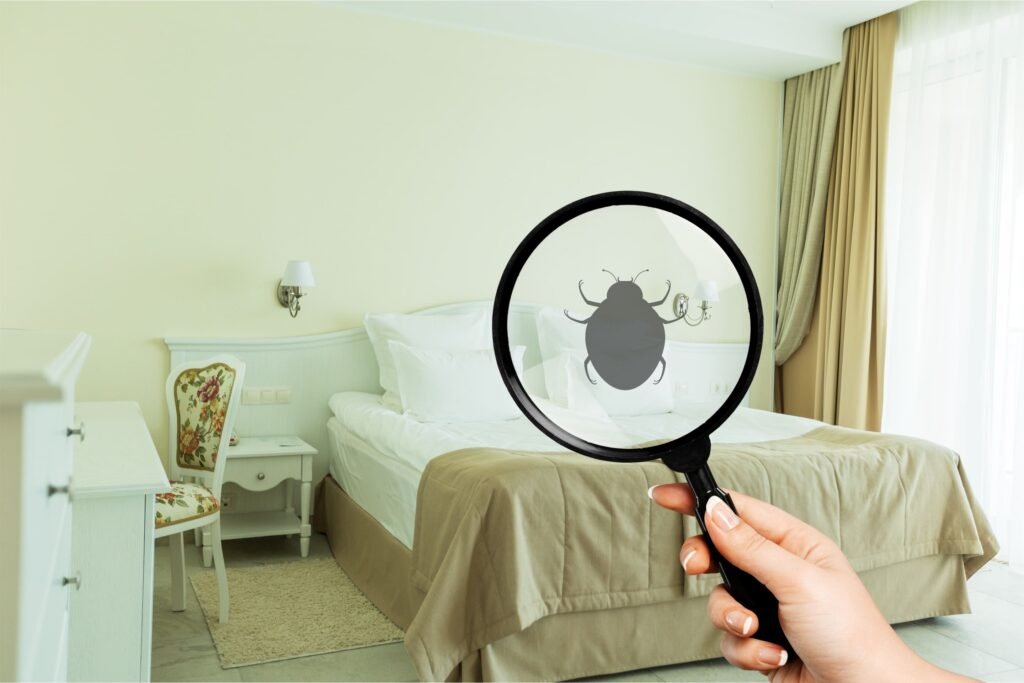


Bed bugs can turn any mattress into a nightmare. But with the right bed bug prevention tools like washable mattress covers, you can defend against infestations and pesky bug bites while you sleep.
A key question for anyone investing in a bed bug mattress encasement is: Can You Wash Bed Bug Mattress Covers? And exactly how do you do it safely and effectively? This guide has all the answers on washing and caring for mattress covers for bed bug prevention.
Here’s what we’ll cover about caring for bed bug mattress covers and encasements:
Let’s start by looking at what bed bug mattress covers are and how they block bed bugs even with regular laundering.
Before digging into the washing details, let’s quickly overview what bed bug mattress encasements are and how they work to lock out pests.
As the NPMA explains about encasements:
“Mattress encasements are protective fabric ‘shields’ that fully wrap a mattress and zip closed on all six sides, preventing bed bugs from infesting or hiding inside.”
So in a nutshell, bed bug mattress covers provide a complete fabric barrier around your mattress. This barrier blocks bed bugs from crawling inside to nest, bite, or lay eggs. Encasements also trap any existing bugs inside so they eventually die off.
It’s a twin defense of smothering bed bugs out!
Now back to answering a key question about bed bug mattress covers: Are these fabrics and protectors able to stand up to regular machine washing?

Here’s the good news when it comes to maintaining bed bug mattress protection — these covers are designed to withstand frequent laundering!
Manufacturers reinforce vulnerable spots like zippers and seals. And they construct external fabric shells and inner barrier layers out of durable materials such as:
So you can trust that washing by the book won’t compromise the bed bug-blocking integrity or lifespan of properly designed encasements. (Cheaper versions may be less wash-worthy though, so focus your mattress protection search on reputable brands.)
In fact, experts actually advise proactively washing covers every month or two as part of your prevention plan…
To keep your first line of defense going strong, aim to launder bed bug mattress covers:
Keep in mind that bed bugs eat shed human skin and oil. So regular hot water washing removes this attractive residue before bugs take notice. Consider it spring cleaning for your mattress armor!
Ready to scrub these creepy crawly foes away? Here’s your playbook for safely and effectively washing bed bug encasements:
Your first move should always be checking tag guidelines for washing and drying. This protects delicate fabrics and barriers from damage. Take note of recommendations for:
Before laundering, gently shake out the cover outdoors to dislodge debris, cast-off skins, and other bed bug temptations. No survivors allowed!
Use the hottest recommended water setting to penetrate fabric and kill bed bugs and eggs on contact. Let that spin cycle mow down any remaining survivors!
Combine this thermal attack with a strong laundry detergent for bed bug prevention. Skip fabric softener, as residue can assist bed bug grip and cling.
Tumble dry on low or no heat to prevent cover degradation. Or hang to air dry out of direct sunlight to limit sun damage. Just ensure moisture gets whisked away fully to deter mildew growth.
Post wash, keep the cover sealed up tight in a plastic bag or storage bin until ready to reinstall. This blocks any roaming bed bugs from sneaking a free ride back to the mattress!
Staying vigilant between rounds in the machine ensures your cover keeps unwelcomed guests out 24/7!

The best practices for washing call for hot water and detergent to penetrate fabrics and drown bed bugs. But take care in selecting a laundry detergent suitable and safe for bed bug prevention.
Avoid detergents with:
Look for detergents with:
The quick answer – most bed bug mattress covers are 100% washing machine safe if done properly! Manufacturers design fabrics and zippers to withstand regular laundering.
But exceptions do exist:
So double-check your cover’s construction before treating to a vigorous hot machine wash.
And even for machine washable covers, take care to avoid over-drying or excessive heat exposure from hot dryer settings, which degrades fabrics over time.
Extreme high temperatures can exterminate these chilling pests for good. Here’s the bug science according to bed bug extermination experts:
So by harnessing your appliance’s hot water heater, the ordinary laundry routine becomes a super-charged bed bug death trap!
However, take note hot water works best on direct contact. So team up with a pest management professional if tackling a serious infestation beyond mattress and bedding isolation.
While designed for hardiness, bed bug mattress encasements still require some gentle care for maximum lifespan:
🔸 Prevent over-drying using medium or low heat to avoid cover degradation
🔸 Line dry covers in the shade whenever possible to limit sun damage
🔸 Wash covers separately from household laundry to prevent cross-contamination
🔸 Seal freshly washed covers in plastic bags or bins until time to reinstall to barricade roaming bed bugs
🔸 Carefully shake out covers outdoors pre-wash to avoid spreading bed bugs indoors
🔸 Always zip closed all openings before washing so hot water penetrates every crevice
And there you have it – everything you could need to know about safely and effectively washing and caring for bed bug mattress covers!
With a quality encasement and consistent laundering routine, you can proactively guard your mattress 24/7 against bed bug threats. No more nighttime bites or creepy-crawly horrors. Just blissfully pest-free sleep!
How often should you wash bed bug mattress encasements?
Target washing bed bug mattress covers at minimum every 2 months. Wash more often after exposure events or if heavily soiled.
Should you use fabric softener when washing bed bug covers?
No! Fabric softeners make covers slippery so bed bugs can cling and crawl over the fabric barrier.
Is dry cleaning okay for bed bug mattress protectors?
Chemical solvents used in dry cleaning risk breaking down fabric over time. Machine washing is better for bed bug prevention.
Can vinegar remove bed bugs from mattress covers?
Vinegar only surface cleans and doesn’t penetrate to kill bed bugs inside fabric. Use hot water washes instead for enclosed mattresses.
What if you put a memory foam topper cover in the washing machine?
Memory foam holds water and can become misshapen or moldy if machine washed. Send out memory foam toppers for professional dry cleaning only.